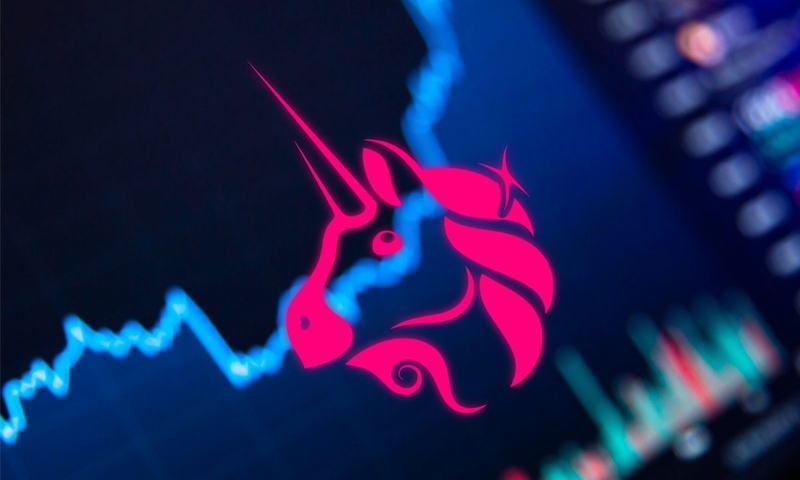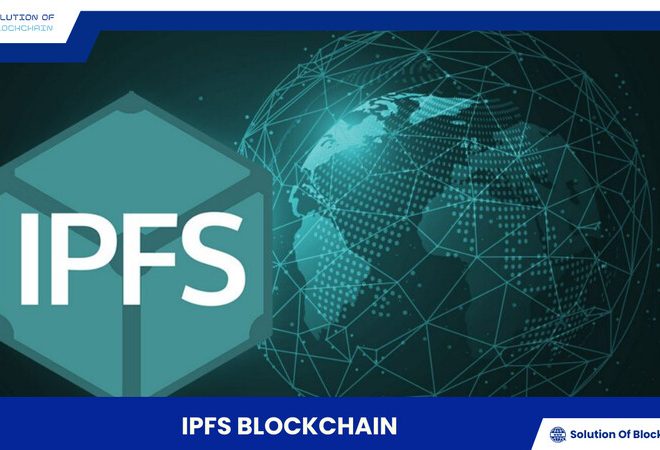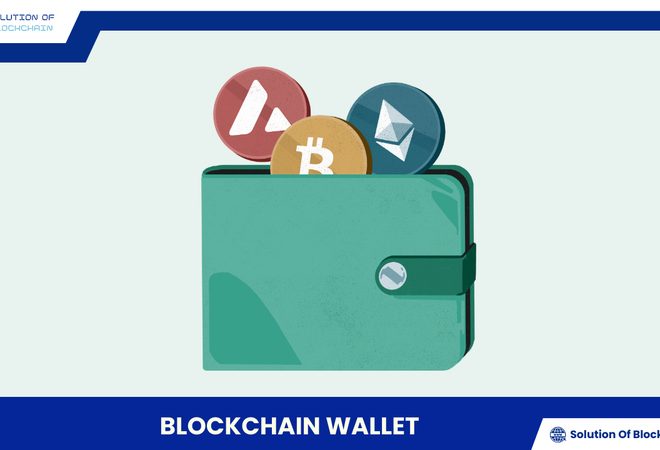
What is Uniswap? Discover the leading decentralized exchange
What is Uniswap? This is a question that many investors are interested in in the context of the explosive growth of the cryptocurrency and DeFi (Decentralized Finance) markets. In this article, let’s learn in detail about Uniswap, how it works, its advantages and disadvantages, and its impact on the DeFi market.
What is Uniswap?
Uniswap is a decentralized cryptocurrency exchange (DEX) that allows users to trade digital tokens without intermediaries like banks or centralized exchanges (CEXs). All transactions occur directly on the Ethereum blockchain via smart contracts. What sets Uniswap apart is its Automated Market Maker (AMM) system, which automatically connects buyers and sellers through liquidity pools, eliminating the need for traditional order books used by CEXs.
Uniswap’s outstanding advantages
- Decentralization: It operates in a completely decentralized manner, free from the control of any single entity. This ensures high security, transparency, and eliminates counterparty risk, giving users full control over their assets.
- High liquidity: The AMM mechanism and liquidity pool system provide ample liquidity, facilitating quick and easy trades at any time.
- Token diversity: Uniswap supports thousands of ERC-20 tokens, offering users a wide range of investment options.
- Low transaction fees: Compared to CEXs, Uniswap generally has significantly lower fees, saving users money.
- Decentralized governance: UNI token holders can participate in governance, voting on proposals and influencing the protocol’s future. This fosters a democratic and transparent ecosystem.
- Global accessibility: Anyone with an internet connection can access and use Uniswap, regardless of their location.
- Easy Token listing: New projects can easily and quickly list their tokens on Uniswap without undergoing complex vetting processes.
- Continuous innovation: Uniswap constantly updates and improves its protocol, introducing new features and enhancing user experience.
Disadvantages of Uniswap
- Slippage: Price slippage can occur when trading large volumes, especially with low liquidity token pairs. This results in a different execution price than expected.
- Gas fees: Transaction fees on the Ethereum network can be high during periods of congestion, increasing trading costs.
- Smart contract risks: While Uniswap has undergone security audits, smart contract vulnerabilities can still occur, potentially leading to asset loss.
- Complex interface: For newcomers, Uniswap’s interface may seem complicated and require some understanding of cryptocurrency and DeFi concepts.
- Impermanent loss: Liquidity providers may experience impermanent loss if the price of tokens in the pool fluctuates significantly.
- Lack of centralized control: While decentralization is an advantage, the lack of centralized control can make it difficult to resolve disputes or address fraudulent activities.
- Attacks and scams: Uniswap can be targeted by attacks and scams, requiring users to be vigilant and protect their assets.
How Uniswap works
Automated market maker (AMM)
Uniswap utilizes an AMM to create liquidity and execute trades. The AMM acts as a “virtual market maker,” automatically adjusting token prices based on their ratio within the liquidity pool.
Specifically, the AMM uses a constant product formula to maintain balance in the liquidity pool: x * y = k, where:
- x: Amount of token A
- y: Amount of token B
- k: Constant
For example, in a liquidity pool with 100 ETH and 10,000 DAI, the constant k = 100 * 10,000 = 1,000,000. If a user buys 1 ETH, the amount of DAI in the pool will decrease to maintain the constant k. The AMM automatically calculates and adjusts the prices of ETH and DAI accordingly.
Liquidity pools and liquidity providers (LPs)
Liquidity pools are reserves holding token pairs, providing the necessary liquidity for trading. Liquidity providers (LPs) are individuals who contribute tokens to these pools and earn rewards in the form of trading fees and LP tokens.
Benefits of becoming an LP:
- Trading fees: LPs receive a portion of the trading fees from every trade executed in the pool they contribute to.
- LP Tokens: Some liquidity pools issue LP tokens to providers as an incentive.
- Liquidity mining: LPs can participate in liquidity mining programs to earn additional rewards.
Risks of providing liquidity:
- Impermanent loss: The value of assets in the pool may decrease due to market fluctuations, resulting in impermanent loss for LPs.
- Market risk: The price of tokens in the pool may decline sharply, causing losses for LPs.
UNI Token and decentralized governance
UNI is Uniswap’s governance token, launched in 2020. UNI holders have the power to vote on protocol changes and upgrades, participating in decision-making and shaping the future of the platform.
Benefits of holding UNI:
- Governance voting: Participating in voting on proposals related to Uniswap’s development.
- Proposal submission: Submitting ideas and changes for the protocol.
UNI Distribution mechanism:
- Rewards for liquidity providers: UNI is distributed to LPs as an incentive to provide liquidity to the protocol.
- Liquidity mining programs: Users can earn UNI by participating in liquidity mining programs.
- Community distribution: A portion of UNI is allocated to the Uniswap community through grants and airdrops.
Transaction fees
This exchange employs a simple and transparent fee mechanism. Each trade on the platform incurs a small fee, typically 0.05%, 0.3%, or 1% depending on the liquidity pool. This fee is directly distributed to LPs proportionally to their contribution to the pool.
Uniswap’s evolution
Uniswap v1
Launched in 2018, Uniswap v1 marked the emergence of a new trading model – the AMM. While it only supported basic ERC-20 token swaps, it proved the feasibility of decentralized digital asset exchange, paving the way for DeFi’s growth.
Uniswap v2
In 2020, Uniswap v2 introduced significant improvements, enhancing user experience and expanding trading capabilities:
- ERC-20/ERC-20 pair support: Enabled direct trading between any two ERC-20 tokens, eliminating reliance on ETH as an intermediary.
- Improved performance and reduced gas fees: Optimized smart contracts for faster transactions and lower costs.
- Flash swaps: Facilitated complex trading strategies, unlocking new opportunities for developers and professional traders.
V2 quickly gained traction, becoming one of the most popular DEXs and laying a solid foundation for the DeFi boom.
Uniswap v3
In 2021, Uniswap v3 further enhanced the user experience with improvements focused on efficiency and flexibility:
- Concentrated liquidity: Allowed LPs to concentrate liquidity within a specific price range, optimizing capital efficiency and increasing earning potential.
- Flexible fee tiers: LPs could choose from multiple fee tiers depending on their risk tolerance and profit expectations.
- Improved user interface: A more intuitive and user-friendly interface made it easier for newcomers to access.
V3 demonstrated superior performance and flexibility, solidifying Uniswap’s leadership in the DEX market.
Uniswap v4
Uniswap v4, the latest version under development, promises groundbreaking advancements in technology and user experience:
- Customizable “Hooks”: Allows integration of new features into liquidity pools, expanding the protocol’s customization and innovation potential.
- Singleton design: Merges all liquidity pools into a single contract, reducing gas fees and increasing operational efficiency.
- Native ETH pair support: Enables direct trading with ETH, simplifying the process and lowering costs.
V4 is expected to be a major step forward, taking the exchange to the next level and continuing to lead the DeFi revolution.
Uniswap’s impact on DeFi
- Enhanced liquidity: The AMM model addressed the liquidity challenge that plagued earlier DEXs. By incentivizing users to provide liquidity through pools, Uniswap created a vibrant and continuous market, making trading easier than ever.
- Reduced barriers to entry: Uniswap allows anyone to list tokens without permission, enabling new projects to access the market and raise capital. This has fueled innovation and diversification within DeFi.
- Fostering new project development: This exchange serves as a platform for new projects to build and thrive. Many projects leverage its infrastructure to create new products and services, enriching the DeFi ecosystem.
- Sparking the AMM trend: Uniswap’s success inspired other DEXs to adopt the AMM model, contributing to the overall growth of the DeFi market.
How to use Uniswap
Step 1: Preparation
- Crypto wallet: Install an Ethereum-compatible wallet that supports ERC-20 tokens, such as MetaMask, Trust Wallet, Coinbase Wallet, or a Binance exchange wallet.
- ETH for gas fees: All transactions on the Ethereum network require gas fees. Ensure you have sufficient ETH in your wallet before trading.
- Tokens to trade: Identify the token pair you want to exchange.
Step 2: Connect your wallet to Uniswap
- Visit the official Uniswap website.
- Click the “Connect Wallet” button in the top right corner.
- Select your preferred wallet and follow the instructions.
Step 3: Choose your token pair and input amount
- In the interface, select the two tokens you want to trade.
- Enter the amount of tokens you want to sell or buy. It will automatically display the rate and the amount of tokens you will receive.
Step 4: Adjust settings (if needed)
- Slippage tolerance: Adjust the slippage percentage you are willing to accept.
- Transaction deadline: Set a time limit for the transaction.
Step 5: Review and confirm the transaction
- Carefully check the transaction details: token pair, amount, exchange rate, and gas fees.
- Click the “Swap” button to execute the transaction.
- Confirm the transaction in your wallet.
Note
- Verify Token contract addresses: Always verify the token contract address before trading to avoid scams.
- Beware of scam projects: The cryptocurrency market is rife with scams. Do your research before investing in any project.
- Monitor gas fees: Gas fees on Ethereum can fluctuate significantly. Keep an eye on gas prices before making transactions.
- Secure your wallet: Always keep your wallet secure and never share your private keys with anyone.
- Use reliable information sources: Consult reputable sources like the official Uniswap website, CoinGecko, and CoinMarketCap for information.
Uniswap is a leading decentralized exchange, providing users with a safe, transparent and efficient way to trade cryptocurrencies. With its unique AMM mechanism and continuous development, this decentralized exchange has been actively contributing to the development of the DeFi market.
Although there are still some limitations, with strong development potential and support from the community, Uniswap is expected to continue to lead the DEX market and contribute to the development of the DeFi ecosystem in the future.
Don’t forget to continue following Solution Of Blockchain to update new information about the financial investment market every day!






